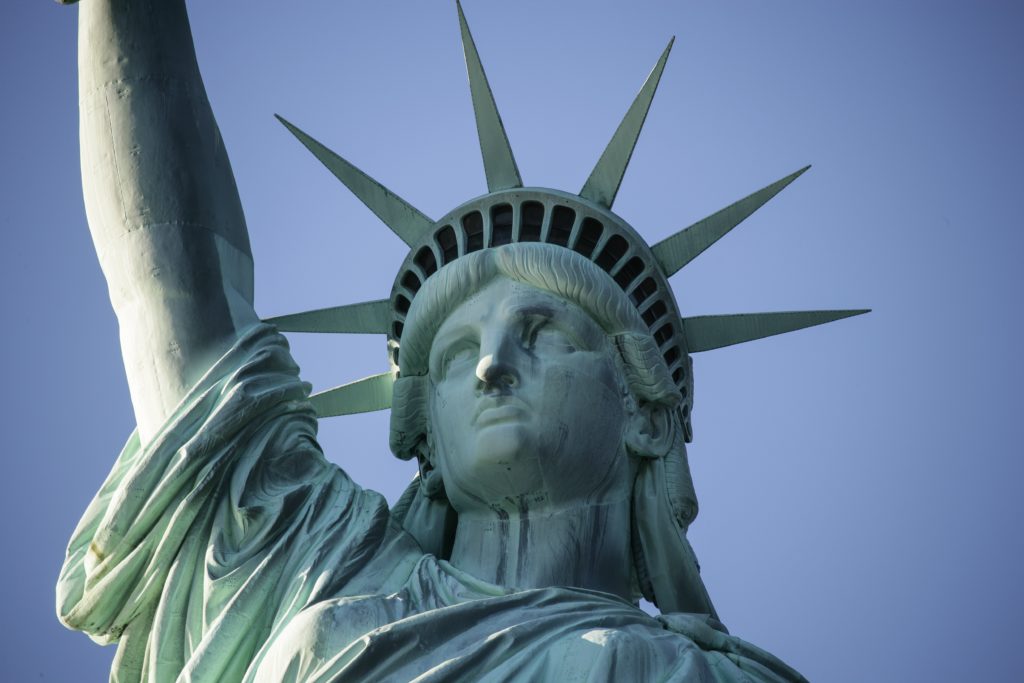Many of us will gather with our family and friends at various celebrations during the Fourth of July weekend. Parade-goers will line the streets as children proudly wave our nation’s flag. The night’s sky, in many towns, will light up with a colorful display of fireworks, and Independence day playlists comprised mainly of Bruce Springsteen and, my personal favorite, Lee Greenwood, will be set on repeat.
There are many celebratory representations of the United States’ independence, but one, in particular, stands a little above the rest – literally. At 305 feet tall, the Statue of Liberty is one of the biggest and most recognized symbols of American freedom. But Lady Liberty doesn’t just embody our own independence; she has roots spanning the world. In fact, the official name of the statue is Liberty Enlightening the World, and several countries have their own replicas, standing tall with her torch proudly in hand. Here are 7 Statue of Liberty facts that show Lady Liberty’s global connections.
1: In Jardin du Luxembourg, one of the largest parks in Paris, stands the first Statue of Liberty. The bronze, life-size sculpture was the original model for Frederic Auguste Bartholdi before he created the statue that was gifted to the United States in 1885 and now stands on Liberty Island off of Manhattan harbor.
2: Seven years before the Statue of Liberty was complete and made its way across the Atlantic, the head of the statue was prominently displayed in 1878 at the Exposition Universelle, the third Paris World’s Fair.
3: As it turns out, there are several Lady Liberty statues in France. The second stands on Île aux Cygnes, a small man-made island on the Seine River in front of the Pont de Grenelle. The statue was inaugurated on July 4, 1889. The tablet in her left arm has two dates inscribed on it: July 4, 1776, commemorating American Independence Day, and July 14, 1789 – Bastille Day, in France.
4: In Cenicero, Spain you’ll find a replica of Lady Liberty built in honor of those who fought in The First Carlist War. The Francisco Franco dictatorship had it removed in 1936, but forty years later (and 200 years after the American colonies declared their independence) the statue was restored.
5: The most unique reproduction of Lady Liberty may be in Billund, Denmark. Here, at the birthplace of The Lego Group and the original LEGOLAND, you’ll find a Statue of Liberty consisting of more than 1 million Lego blocks.
6: Although France gets most of the design credit, the statue in New York City may have both French and Norwegian roots. Though highly debatable, it is said that the copper used to build the Statue of Liberty came from a copper mine in Visnes, Norway. Today, a small replica of Lady Liberty is located in Visnes, where one of northern Europe’s largest and most active copper mines once stood.
7: It is believed that the 7 spikes on the statue’s crown represent the world’s 7 continents and 7 seas. This last fact does not directly tie into one specific country, but instead further exemplifies the statue’s true name and symbolic meaning.
Enjoy learning these Statue of Liberty facts and want to see Lady Liberty in person? Take a look at these New York City tours.
Editor’s note (2021): This piece has been updated for clarity, accuracy, and relevance.
Related articles

